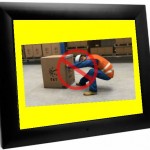 Most companies have a safety program. “Safety is job one” the slogan reads. Often times the safety program is a product of the front office and is a born, in part, out of a strong desire to reduce risk of insurance claims and lawsuits.
Most companies have a safety program. “Safety is job one” the slogan reads. Often times the safety program is a product of the front office and is a born, in part, out of a strong desire to reduce risk of insurance claims and lawsuits.
It should be the policy of every company to strive for the highest safety standards, in the office and on job sites. Safety does not occur by luck or chance. It is the result of careful attention paid to all company operations, both those who are directly and those indirectly involved. Employees at all levels must be informed and involved. Regard for the safety of the general public, all company employees and anyone who enters the jobsite/work area is a responsibility at all levels of every firm. Prevention of injury and illness is a goal well worth the effort.
I have seen safety programs adeptly organized 3-inch binders just collecting dust on shelves in corporate offices. I have seen copies of those same binders covered even thicker with dust in job trailers and field offices. Once completed, the pages of these comprehensive manuals rarely see the light of day until the next update. For all the good (information) they contain, safety manuals rarely keep people safe.
To better equip all personnel with knowledge of health, fire, security, environmental hazards and to better prepare personnel to care for victims of an accident or sudden illness until professional medical help is available; a new approach is needed.
First, keep the frontline superintendents more involved in the safety process. This goes beyond just making them responsible for carrying out site inspections, filling out compliance reports and conducting toolbox talks. We have to listen to their concerns, perceptions as to what will, and what won’t help keep people safe on their sites.
Next, recognize most of us retain what we see much more easily than what we hear. Having the superintendent read toolbox talks (TBT) to the crew is a good thing, but more needs to be done. Break down those toolbox talks into one or two sentence highlights. At regular intervals, have someone at corporate text a new highlight segment to each member of the work crew (once or twice a day). Do this until the next scheduled toolbox talk. Reinforcing what was heard with something that requires action (reading a text) keeps the point of the TBT fresh and raises awareness. It may spur new discussions, which further raise awareness and provide clarity. Start the process over with each new talk.
Finally, mount an 18” digital picture frame on a wall inside the field office. Load the frame’s memory card with a slideshow presentation that plays in a loop throughout the day. Topics for the slides can be gleaned from your safety manual, toolbox talks, recent “hot” issues or any combination of these.
The slideshow is critical, try not to use the same tired old slides that have been around since the 60’s! Create the presentation using photos from recent project sites, do an internet image search, or ask your kids to draw posters. You can add text to the slides, but you should have narration. For the narration, record different workers reading a prepared script (one or two lines). Match the narration to your slides, save the presentation on the memory card pop it in the frame and let it play softly in the background. People will respond to the constantly changing images and voices. Letting the slideshow play on a loop means people are exposed to different safety messages throughout the day.
In conclusion, help keep tips to working safely on everyone’s mind every day instead of in a manual collecting dust. You can do this by incorporating fresh ideas like the ones above into your safety program.
